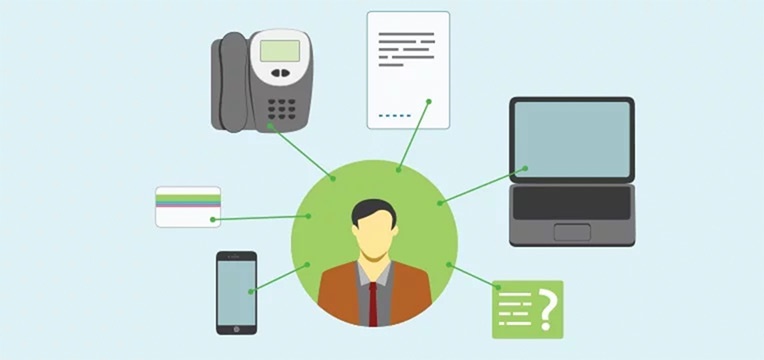
Sarah Bilton
Are you about to merge two or more service desks? Perhaps due to a merger of companies, or a centralization within your organization? The key to shaping the various teams into one successful service desk is drafting a service catalogue together. Here’s why.
Merging two teams is never easy. You're combining two groups of people with different tasks, different processes, different habits, and different cultures, asking them to work together - without any problems, if you please. No wonder this often comes with a lot of friction and frustration.
While there's no magic trick for merging service desks successfully, there is something you can do to get the new team off to a good start:
Build a service catalogue together.
Why? For one, a joint project is a good start for a good collaboration. And drafting a service catalogue forces you to tackle a lot of questions on how to organize your service desk early on – questions that you'll otherwise keep running into later.
Here are 9 questions you need to ask when drafting a service catalogue:
1. Which services do you support?
One of the most fundamental questions your new service desk will have to answer, is: what services do you support? Do you support the latest release of a popular smartphone? Do you completely tailor new laptops to our customers’ needs, or do you provide them with an OS and ask them to install the relevant applications themselves?
Remember that the service desks you’re merging used to support their own individual set of services. To manage your customers’ expectations, you’ll need to draw up a new, collective service catalogue. And communicate it when you’re done, of course.
2. What are your SLAs?
Once you know what services you support, you need to decide on the conditions. How do you prioritize calls? What service levels are you offering? How many weeks should supplying a laptop be allowed to take?
Keep in mind that your new agreements also depend on existing contracts with customers. This is especially relevant when you’re servicing external customers. In this case, you’ll new SLAs will have to co-exist with your current contracts.
3. What's your shared vocabulary?
For a smooth collaboration between the service desk teams, you need a shared vocabulary. When describing your services, do you talk about tickets, calls or incidents? Will the team names remain the same or do you want to introduce a new one? What will our self-service portal be called?
A shared vocabulary helps you improve communication and collaboration between the two former teams. It also helps to communicate more clearly to your customers what it is you offer.
4. How should your customers contact your service desk?
If your customers know your service desks are merging, the one question they’ll have, is: where do I need to go when I have a question? Maybe customers from service desk A are used to dropping by at the service desk, while customers from service desk B were told to fill in a form on your intranet.
Merging service desks is the perfect opportunity to inform your customers about how you would like them to log their calls.
5. How do you handle incoming calls?
A shared process for handling incoming calls helps to align working methods. Who answers incoming calls? What information do we want from our customers before we can process the call? Do we check with the customer whether the solution works for them, or do we close the call and inform them via an automatic email?
Aligning these processes doesn’t have to be hard. You simply map the call processes for both teams, spot the differences and for each choose to adopt one or the other. Whichever process you choose, it’s important to communicate to the team what the new process will be.
6. How do you handle off-the-menu requests?
Apart from determining what services you support, you also need to decide how you handle request for service that you do not support. Say you decide not to support macOS. What do you say when a colleague asks you to help out with his iPad?
7. What are the roles & responsibilities in the team?
When merging service desks, you might find that your new team has duplicate roles. Say that both service desk teams had a Knowledge Manager. Do you need two? If not, who will do what?
A merge usually opens up new possibilities, too, with new roles or tasks to take up. Seize this opportunity to chat with all your service desk staff members to discuss their role & responsibilities, as well as their ambitions.
8. What do you want your team culture to be?
More than anything, merging two teams means merging two team cultures. Two teams with their own values, habits, quirks and preferences. Whether or not the two teams manage to constructively work together, is hugely influential for the success of the merger.
Doing a project together with a shared goal, is a nice way for the two teams to get to know each other better. Drafting a service catalogue is the perfect project to start with.
9. How do we divide the transition into stages?
Different service desks use different tools and applications. You can’t merge them all overnight, so you’ll have to merge and phase out tools in stages.
For example, you might take support calls on current laptops, but if they are beyond repair you swap this out with the agreed new laptop of choice. Or you decide that for a period you'll be working be working with both Active Directories, until two become one. Make sure your teams are aware of each stage of the merger so you can avoid confusion along the way.
Is drafting a service catalogue worth the effort?
A remark I often hear when I talk about service catalogues, is: 'But we don't have time for setting up a service catalogue, we prefer to tackle those issues as we go along.' This may sound like a practical, agile approach. Why overengineer things, right?
The thing is: you will run into the questions above sooner or later. In my experience, tackling those questions early on is saves you a lot of time and energy later on.
Further reading for improving your service catalogue
Want to build or improve your service catalogue? We have some more content to help you on your way:
- Blog: Making your IT Service Catalogue customer centric
- Blog: 5 things that make a good Service Catalogue
- Ebook: Your guide to self-service - 52 pages of best practices and cases, including a step-by-step guide for implementing or improving your service catalogue.

Submit a Comment